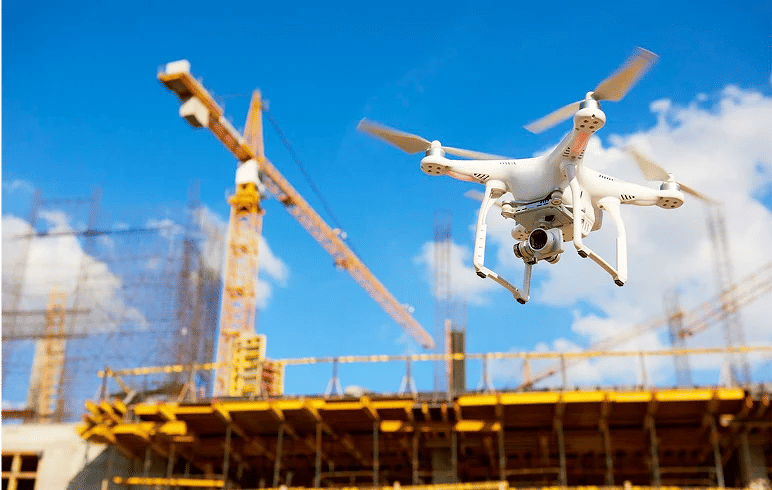
Time-lapse technology significantly contributes to risk management as it offers constant monitoring. Companies can utilize and analyze the footage to identify potential safety hazards like risky behaviour of the workers and unsafe practices before accidents occur. These cameras provide a better safety approach since they can address the issues immediately before they become significant. Moreover, the captured footage also serves as evidence for any accidents, allowing the management department to review the circumstances and make necessary adjustments to safety protocols. This continuous surveillance reduces liability in high-risk environments, ensuring everything functions under safety regulations.
Time-lapse videos provide a compelling visual record of the project's progress. It helps to document the progress of large-scale construction projects, popularly known as megaprojects, often involving billions of dollars and years of work. These projects, usually including the construction of bridges, tunnels, highways, and even entire cities, are visually compressed into concise time-lapse videos that showcase their development.
The technique deals with all aspects of the project, or you can just showcase the parts you need, capturing the evolution of the build in a condensed format. Several mega construction projects are underway in the USA and Canada, involving billions of dollars in investment and having significant impacts on infrastructure and regional development.
- ◦ The California High-Speed Rail project aims to connect Los Angeles and San Francisco with a fast rail line, costing an estimated $77 billion. The completion of the project will provide a one-seat ride between Union Station and San Francisco in 2 hr & 40 minutes, a distance of 380 miles.
- ◦ The Las Vegas Convention Center Loop project aims to create a loop-style transportation system within the Las Vegas Convention Center, at an estimated cost of $52.5 billion. The 1.5-mile-long underground system targets up to 4,400 passengers per hour through two tunnels using a fleet of Teslas.
- ◦ Gordie Howe International Bridge project, delivered through a public-private partnership, provides a new transportation link between Windsor and Detroit, and is another example of such a giga construction project.
- ◦ The Ontario Line (Toronto) is a driverless subway line, part of Toronto's transit expansion. It is planned to run underground, elevated, and at surface level. While the construction started in 2022, with the project expected to be operational by 2031, the estimated cost for this 15.6-kilometre (9.7 mi) line is CA$27 billion.
- ◦ The Alto Railway project, described as Canada's largest infrastructure project, aims to boost the economy and create jobs, spanning Toronto and Quebec City, with five stops in between: Peterborough, Ottawa, Montreal, Laval, and Trois-Rivières. The estimated cost is $3.9 billion for this project.
There are several remarkable benefits of time-lapse videos that make them valuable in the construction industry:
Time-lapse allows stakeholders and clients to see how the project will be. Construction firms can use this footage to keep involved parties updated on progress.
Time-lapse videos offer remarkable footage of the construction progress. These videos are best for future reference, legal purposes, and training. They also identify the issues and delays during the processes that are addressed. These videos offer a brief visual presentation of the project's evolution and assist stakeholders and other parties involved in monitoring the progress. It also helps teams fix the issues during the project timeline.
Time-lapse captures the whole construction process. Through this captured footage, teams can identify the issues during the construction, take the essential actions to resolve them, and avoid delays in future projects.
Time-lapse production is a delicate technique that captures images at predetermined intervals that expand over months or years of construction work. These photos are merged and converted into a video. This process accelerates and enhances the slow-moving processes, allowing companies to review days, months, or years of progress within minutes.
- ◦ Time-lapse cameras, specially made for construction sites, have weather-resistant and high-resolution features that can tackle extreme conditions.
- ◦ Advanced software that merges high-quality images or footage for analysis and editing.
- ◦ Automation systems for seamless data capture in remote locations or extreme conditions.
The current and modern time-lapse systems come with AI-driven analytics and cloud storage, offering seamless access to real-time data and details. These videos have brought the USA and Canada's building progress to life with cinematic and dynamic storytelling. Construction time-lapse technology goes beyond just videos; it is a powerful and practical tool for marketing, monitoring, documenting, and showcasing construction processes. With the appropriate settings and equipment, it is relatively easy to create high-quality footage capturing the essence of construction projects, monitoring potential hazards, enhancing large-scale projects, and using them as beneficial marketing tools.




